Sept. 3, 2016 show
Ask Nelson - and Bob Hammel, too
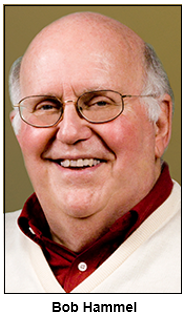 A few times every year, Hoosier History Live opens the phone lines so listeners can inquire about any aspects of our state's heritage. A few times every year, Hoosier History Live opens the phone lines so listeners can inquire about any aspects of our state's heritage.
On these shows our host, Nelson Price, is joined by a media colleague who serves as a co-host. This time, Nelson will be joined by a fellow author/journalist. Bloomington-based Bob Hammel, who has been inducted into the Indiana Journalism Hall of Fame, is well known across the state - and not just because of his long career as a sportswriter and as a close friend of Bob Knight, the former Indiana University coach.
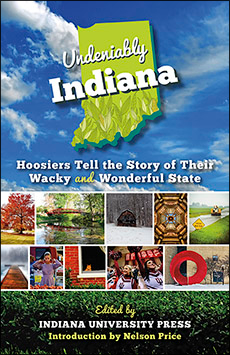 In recent years, Bob Hammel has written biographies of Bill Cook, the billionaire entrepreneur, philanthropist and historic preservationist who was described as the richest man in Indiana when he died in 2011. During our show, Bob will ask Nelson about two new books - both published and endorsed by the Indiana Bicentennial Commission - in which our host has been involved. In recent years, Bob Hammel has written biographies of Bill Cook, the billionaire entrepreneur, philanthropist and historic preservationist who was described as the richest man in Indiana when he died in 2011. During our show, Bob will ask Nelson about two new books - both published and endorsed by the Indiana Bicentennial Commission - in which our host has been involved.
They include Undeniably Indiana, the first-ever "crowd-sourced" book published by IU Press. Nelson has written the introduction for the book, which features vignettes and anecdotes about (as well as photos of) Indiana submitted by dozens of Hoosiers. Topics range from Hoosier cuisine and bygone drive-in restaurants to the state's unpredictable weather and Carmel's fame as the country's "roundabout capital."
The other new book is So You Think You Know Indiana? (Newspapers in Education), an illustrated collection of articles Nelson has written for young readers about various aspects of the state's heritage. 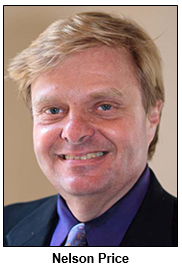 Copies of the book - which includes sections focusing on Native Americans, misconceptions about Indiana and our often-quirky pattern of place names - will be donated to every elementary school in the state. Copies of the book - which includes sections focusing on Native Americans, misconceptions about Indiana and our often-quirky pattern of place names - will be donated to every elementary school in the state.
Primarily, though, the show will be your opportunity to call in and ask questions of the co-hosts. The WICR-FM studio number is (317) 788-3314.
Between phone calls from listeners, Nelson will ask co-host Bob Hammel about the influential Hoosier who was the focus of two of his most recent books, The Bill Cook Story: Ready, Fire, Aim! (IU Press, 2008) and The Bill Cook Story II: The ReVisionary (IU Press, 2015.) Bill Cook and his wife, Gayle, launched a Bloomington-based medical equipment business (they began by assembling catheters in their spare bedroom) that evolved into what's now The Cook Group.
Of course, Nelson also will ask Bob Hammel to share insights about Bob Knight - Bob Hammel was the co-author of the controversial coach's autobiography, Knight: My Own Story (St. Martin's Press, 2003) - as well as other athletes, coaches and public figures he has covered.
 Although Bob is best-known for his 30-year career as a sportswriter and columnist at The Bloomington Herald-Times, he has worked for media in many other Indiana cities. A native of Huntington, Bob has written for newspapers in Fort Wayne, Peru and Kokomo, among others. Although Bob is best-known for his 30-year career as a sportswriter and columnist at The Bloomington Herald-Times, he has worked for media in many other Indiana cities. A native of Huntington, Bob has written for newspapers in Fort Wayne, Peru and Kokomo, among others.
Residents of those cities also contributed to Undeniably Indiana. Not only does the book feature an introduction by Nelson, several Hoosier History Live guests are among the contributors.
They include Allen County historian Tom Castaldi, who shares details about yuletide decorations in Fort Wayne, Ray Boomhower of the Indiana Historical Society and Bluffton resident Kayleen Reusser, who writes about her first job as a teenage waitress in a restaurant beloved for its sugar cream pie. Other contributors - and Hoosier History Live guests - include Frankfort resident Janis Thornton; Tom Spalding, who writes about chimney sweeps; and Indiana Department of Natural Resources botanist Michael Homoya, who shares insights about a wildflower found only in Indiana.
Nelson's other books include Indiana Legends: Famous Hoosiers from Johnny Appleseed to David Letterman (Hawthorne Publishing, 2005), which features profiles 160 historic and contemporary notables; The Quiet Hero: A Life of Ryan White (Indiana Historical Society Press, 2015), and Indianapolis Then and Now (Pavilion Books), a visual history of the Hoosier capital. An extensively revised edition of Indianapolis Then and Now was published earlier this year; Nelson's collaborators on the book are his co-author, Joan Hostetler, and photographer Garry Chilluffo.
Our show's co-host Bob Hammel traveled extensively during his Bloomington-based newspaper career. He was in Munich for the 1972 Summer Olympics when IU swimmer Mark Spitz won a then-record seven gold medals; Bob also covered the 1996 Atlanta Olympics.
In 1968, he was in Pasadena for IU's only appearance in the Rose Bowl; he also covered the NCAA championships won in 1976, 1981 and 1987 by IU's basketball teams coached by Knight. So listeners are invited to phone in during our show and ask about any of those historic events.
The phone lines will be open throughout the entire show. The co-hosts will be prepared to take questions at (317) 788-3314.
Roadtrip: Great old still-open theaters in Angola, Indiana
Guest Roadtripper Eric Grayson, also known as Dr. Film, suggests going to parts of Angola in northern Indiana that you probably never noticed before.
"Angola is famous for its car auctions and museums, but I'm a film historian, and there's something really cool in Angola," Eric tells us. "The Strand and the Brokaw (at the intersection of U.S. 20 and U.S. 127) are two historic movie theaters on the main square of the city, both of which are still open!"
Eric says this may be the only place in Indiana where you can find two historic movie theaters in the same block that both are still open.
Says Eric: "The Brokaw has just been restored and is in beautiful shape. (I haven't been in it since the restoration.) It's a 1931 Art Deco theater designed by architect Alvin M. Strauss."
He continues: "The Strand is still operating much as it ever has been. It's an older building, but the theater has been remodeled in an Art Deco style. If you get a chance to go in, the projection booth is really tiny; you can see it from the concession stand."
The Strand is one of the few theaters in Indiana still running real movie film, as opposed to digital. The owner has a cool collection of memorabilia.
"For lunch, just around the corner from the Strand is Sutton's Deli," says Eric, "which has always been closed when I've been there, but is a place I want to try."
History Mystery
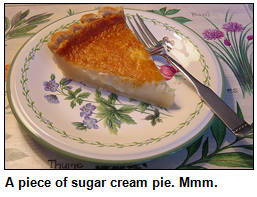 Both of the two new books to which our host Nelson Price has contributed - Undeniably Indiana and So You Think You Know Indiana? - include references to sugar cream pie. Both of the two new books to which our host Nelson Price has contributed - Undeniably Indiana and So You Think You Know Indiana? - include references to sugar cream pie.
Often marketed as Indiana's state pie, sugar cream pie has several historic connections to Hoosiers. Among them: The world's largest maker of sugar cream pie is located in a town in Indiana. The family-owned pie factory in the town ships sugar creams and other pies to customers across the country. The multi-generational family been making pies in the Indiana town for nearly 70 years.
Question: Name the Indiana town that is home to the world's largest maker of sugar cream pie.
Hint: The town is in eastern Indiana.
The call-in number is (317) 788-3314. Please do not call into the show until you hear Nelson pose the question on the air, and please do not try to win the prize if you have won any other prize on WICR during the last two months. You must be willing to give your name and address to our engineer and be willing to be placed on the air.
The prize is two tickets to the Hoosier Hops and Harvest Craft Beer Festival in Brown County, courtesy of the Story Inn, and a gift certificate to Iozzo's Garden of Italy restaurant, courtesy of Iozzo's.
Your Hoosier History Live team,
Nelson Price, host and creative director
Molly Head, producer, (317)
927-9101
Richard Sullivan, webmaster and tech director
Pam Fraizer, graphic designer
Garry Chilluffo, media+development director
www.hoosierhistorylive.org

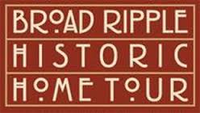 
 
 
 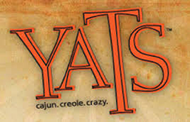
Please tell our sponsors that you appreciate their support: Broad Ripple Historic Home Tour | Cook Medical | Indiana Authors Award | Indiana Historical Society | Lucas Oil | Mr. Tequila's Cantina & Grill | Scott Keller Appraisals | Shirley Brothers Mortuaries & Crematory | Story Inn | Visit Indy | Yats Cajun Creole Restaurant
  Acknowledgments to Monomedia, Visit Indy, WICR-FM, Fraizer Designs, Heritage Photo & Research Services, Derrick Lowhorn and many other individuals and organizations. We are an independently produced program and are self-supporting through organizational sponsorships and individual contributions. We do not receive any government funding. Visit our website to learn how you can support us financially. Also, see our Twitter feed and our Facebook page for regular updates. Acknowledgments to Monomedia, Visit Indy, WICR-FM, Fraizer Designs, Heritage Photo & Research Services, Derrick Lowhorn and many other individuals and organizations. We are an independently produced program and are self-supporting through organizational sponsorships and individual contributions. We do not receive any government funding. Visit our website to learn how you can support us financially. Also, see our Twitter feed and our Facebook page for regular updates.
Sept. 10, 2016 show
Moravian heritage of Hope, Indiana
Although Columbus, Indiana, in Bartholomew County, south of Indianapolis, is known as a "Modernist Mecca" for midcentury architecture, the small town of Hope in the county's northeast Haw Creek Township has its own unique heritage.
Hope was founded in 1830 by Protestant Moravian Martin Hauser from Salem (now Winston-Salem) North Carolina. The Moravian Church had its origins in 1457 in Moravia, an area now a part of the Czech Republic. Moravians pre-dated the Protestant Reformation with breaks in belief from the Roman Catholic Church and were likewise subject to persecution.
 Like many groups seeking autonomy and religious freedom, Moravians moved into different parts of Europe and on to America, where they settled mostly in North Carolina and Pennsylvania. German was the language spoken by Moravians coming to America. Like many groups seeking autonomy and religious freedom, Moravians moved into different parts of Europe and on to America, where they settled mostly in North Carolina and Pennsylvania. German was the language spoken by Moravians coming to America.
Hope was originally settled as a "congregational town" for Moravians only, with land and property being owned and managed by the church and leased to church members. Simply put, the church owned and ran the town. Somewhat similar to social experiments in New Harmony with communal property, the "congregational town" concept ended in Hope in 1837 when the town was opened up to individual property ownership, and non-Moravians also were allowed to settle there.
Some early residents of Hope were descendants of the settlers of the ill-fated Moravian Mission that operated near Anderson, Indiana, along the White River from 1801 to 1806. The mission's purpose was to bring Christianity to the Native Americans in the area. The mission members and its Native American "converts" were met with strong resistance by local tribes, and in particular by "The Prophet," the brother of Shawnee leader Tecumseh. Learn more about The Prophet's "Indian witch hunts" on the show.
The Hope Moravian Church, founded in 1830 and originally a log cabin on the town square, remains the only Moravian Church in Indiana. Many of its traditions continue today, such as display of the "putz," or elaborate Christmas scene in miniature, in the church at Christmastime, the tradition of hanging Moravian stars, and the making of Moravian sugar cakes, a type of sweet raised coffee cake widely sold at local festivals.
The historic section of the Hope Moravian Church Cemetery is known as "God's Acre," with its first burial in 1833. Members were buried in the "choir" system, where burials are by gender, with a section for boys, unmarried men, married men, girls, unmarried women, married women and paupers. This follows the early Moravian custom of burial as done originally in Herrnhut, Germany.
Since the 1830s, Hope Moravians have also gathered in God's Acre for the Easter Sunrise Service, which includes a trombone choir and a processional by all church members that involves singing songs and watching the sun rise in the east.
This show will be guest-hosted by producer Molly Head, giving Nelson time off to conduct one of his famous tours that delve into Indiana history and notable Indiana people.
Molly's guests include two retired Hope elementary school teachers who are also great storytellers: Barb Johnson and Beth Newman. Both Barb and Beth have taught 4th-grade Indiana history and also have been schoolmarms at the Simmons School, which is a brick one-room schoolhouse that was moved from its original location in the country to the "back yard" of the Hope Elementary School in 1989. And guests Barb and Beth are involved in the Yellow Trail Museum, the history museum located on the town square. Much of downtown Hope and surrounding residential areas is listed on the National Register of Historic Places.
On Sept. 17-18 in nearby Hartsville, Haw Creek Township's Bicentennial Festival will feature music, old-fashioned games for children and tours of Hartsville. The Bicentennial torch is expected to pass through Hartsville at 5 p.m. on the 18th. We also expect a call in to the show from Perry Hammock, executive director of the Indiana Bicentennial Commission. And don't forget to call in with your questions and comments at (317) 788-3314.
© 2016 Hoosier History Live! All rights reserved.
|